- Home
- Crop Knowledge
- Fruits
- Pomegranate
Pomegranate
Category: Fruits
- Nutrients
- Common Pests
- Crop Selection
- Documents
Nutrients
|
Crop Stage Images |
 |
 |
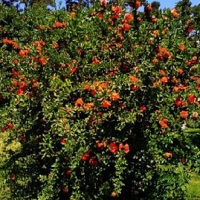 |
|
|---|---|---|---|---|
| Crop Stage | 1st Year | 2nd to 5th Year | 6th Year Onwards | |
|
Nutrients (g/tree) |
FYM(Kg) | 10 | 20 | 30 |
| N | 200 | 400 | 600 | |
| P | 100 | 250 | 500 | |
| K | 400 | 800 | 1200 | |
Deficiency of Nutrients:
| Nutrients | Nitrogen (N) | Phosphorus (P) | Potassium (K) | Calcium (Ca) | Magnesium (Mg) |
|---|---|---|---|---|---|
| Nutrients Deficiency | 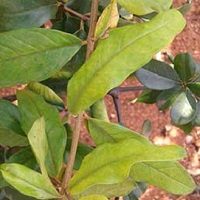 |
 |
 |
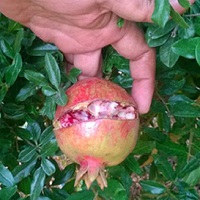 |
 |
| Deficiency Symptoms | 1. Older leaves becoming yellow colour plant cannot with a standard to climatic conditions.
2. Fruits smaller and mature early. |
1. Leaf tips look burnt, followed by older leaves turning a dark green or reddish-purple.
2. Retarded growth, premature dropping fruits, Less number Of white roots. |
1. Peach leaves with scorching and rolling up as if water stressed due to potassium deficiency.
2. Pomegranate leaves show K deficiency symptoms in older leaves first. |
1. New leaves are irregularly shaped, cracking of fruits.
2. Abnormal growth of young leaves and growings tips. |
1. Interveinal chlorosis.
2. Reduction in growth and premature defoliation. |
| Nutrients | Sulphur (S) | Boron (B) | Manganese (Mn) | Zinc (Zn) | Iron(Fe) |
|---|---|---|---|---|---|
| Nutrients Deficiency | 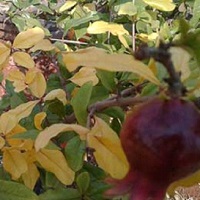 |
 |
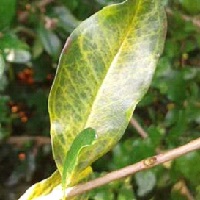 |
 |
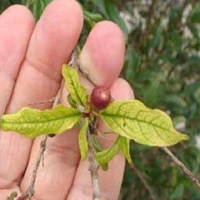 |
| Deficiency Symptoms |
1. Leaf tips remain green and severe deficiency the whole leaf turns yellow. 2. Growth is stunted. Reduced Fruit quality & Sweetness. |
1. Fruits small, harder, abnormal and crack.
2. Scattered yellow spots on the leaf surface and the leaf tip show burn symptom. 3. Leaves thick and brittle. |
1. The appearance of light green mottle between the main veins A band of darker green left bordering the main veins while the interveinal chlorotic areas become pale green or dull yellowish in colour.
2. plant growth may be reduced and stunted. |
1. Symptoms are usually small irregular dropping spots.
2. Reduced leaf and shoot growth, reduction in flowering and fruit setting. |
1. Leaves become pale yellow, in severe cases leaves turn to complete yellow and die back.
2. Leaf chlorosis on rapidly growing water sprouts. |
Common Pests
Pomegranate ButterflyFruit Sucking MothThripsShot Hole BorerMealy BugsWhite FlyAphids
| Images Of Pest Life Cycle: |  |
 |
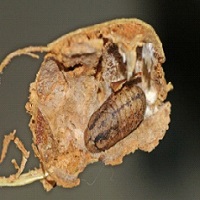 |
 |
|---|---|---|---|---|
| Stages: | Egg | Larvae | Pupae | Adult |
| Mark Of Identification: | Laid singly on tender leaves, stalks and flower buds. | Bark brown, short and stout, covered with short hairs. | Occurs either inside the damaged fruits or on the stalk holding it. | Bluish brown butterfly. |
| Life Cycle: | 5-8 Days. | 18-47 Days. | 7-34 Days. | 7-34 Days. |
Management (Pest Control):
| Chemical: | Two sprays of Emamectin benzoate 5 SG at the rate of 0.25 gms/lit or Spinosad 45 SC at the rate of 0.20ml/lit has recorded the highest reduction in the fruit damage. |
|---|---|
| Organic: | Spray G Agro Beau 5gm/lit + G Agro Meta 5ml/lit 2 to 3 spray at 21 days interval. |
| Images Of Pest Life Cycle: | 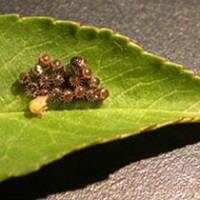 |
 |
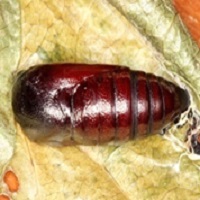 |
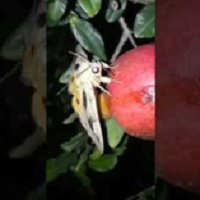 |
|---|---|---|---|---|
| Stages: | Egg | Larvae | Pupae | Adult |
| Mark Of Identification: | Brown spotted color. | A circular pinhole like spot appears at the feeding site. Later on, the area around the damaged portion turns yellowish-brown. | Pupates on the leaves of gulvel and vansvel. | Moths puncture the fruits & cases fruit rot. |
| Life Cycle: | 8-10 Days. | 28-30 Days. | 14-18 Days. | 20 Days. |
Management (Pest Control):
| Chemical: | Poison baiting (20 ml malathion 50 EC + 200 gm jaggary + 2 lit. water). |
|---|---|
| Organic: | Spray G Agro Beau 5gm/lit + G Agro Meta 5ml/lit 2 to 3 spray at 21 days interval. |
| Images Of Pest Life Cycle: | 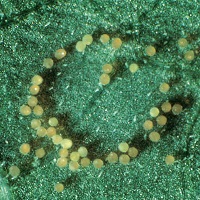 |
 |
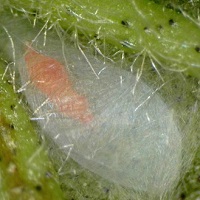 |
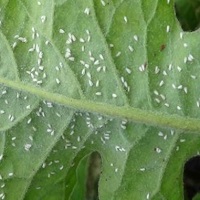 |
|---|---|---|---|---|
| Stages: | Egg | Nymphs | Pupae | Adult |
| Mark Of Identification: | White bean shaped eggs on under surfaces of leaves or leaf tissues.Light yellowish in color. | White and reddish in colour. | Reddish, later on, turn yellowish. | The adults are minute, slender, soft-bodied insects with heavily fringed wings, blackish brown with yellowish wings. |
| Life Cycle: | 2-7 Days. | 3-8 Days. | 2-5 Days. | 13-15 Days. |
Management (Pest Control):
| Chemical: | Dimethoate 30 EC 1.00 ml or Imidacloprid 200 SL 0.30 g or Clothianidin 50% WDG 0.12 g or Thiamethoxam 25 WG 0.25 g or Lambda-cyhalothrin 5EC/CS 0.50 ml or Spinosad 45 SC 0.25 ml or Emamectin benzoate 05 SG 0.20 g per liter of water. |
|---|---|
| Organic: | Spray G Agro Microfeed L 5gm/lit + G Agro Meta 5ml/lit 2 to 3 spray at 21 days interval. |
| Images Of Pest Life Cycle: |  |
 |
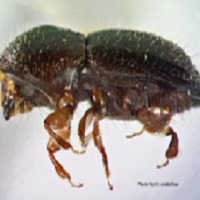 |
|---|---|---|---|
| Stages: | Egg | Larvae | Adult |
| Mark Of Identification: | Eggs are oval or round, shiny and iridescent white. | Larvae are white, legless and can be up to 4 mm long. | Adults are about 2-3 mm long, black to reddish-brown, and cigar-shaped. They have a short, stubbed head capsule, with chewing mouthparts. Male adults do not fly. Two generations per year. |
| Life Cycle: | 4 Days. | 7-9 Days. | 4 Days. |
Management (Pest Control):
| Chemical: | Application of chloropyriphos 0.1% along with geru (red soil) & 0.025% copper oxychloride (Blitox) as paste application quite effective. |
|---|---|
| Organic: | Spray G Agro Beau 5gm/lit + G Agro Meta 5ml/lit 2 to 3 spray at 21 days interval. |
| Images Of Pest Life Cycle: | 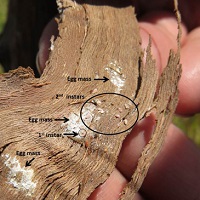 |
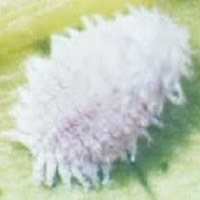 |
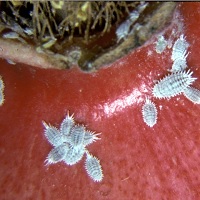 |
|---|---|---|---|
| Stages: | Egg | Nymphs | Adult |
| Mark Of Identification: | Female laid eggs in groups which lay beneath the body. | Nymphs are white in colour. | Soft-bodied, flat and waxy, mealybugs can also be identified by their oval shape and body segmentation. |
| Life Cycle: | 20-29 Days. | 26-57 Days. | 36-53 Days. |
Management (Pest Control):
| Chemical: | Release Cryptolaemus montrouzieri near the site of mealy bug @ 10/tree. |
|---|---|
| Organic: | Spray G Agro Microfeed L 5gm/lit + G Agro Meta 5ml/lit 2 to 3 spray at 21 days interval. |
| Images Of Pest Life Cycle: | 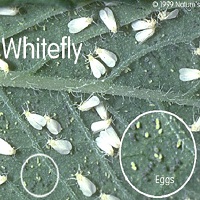 |
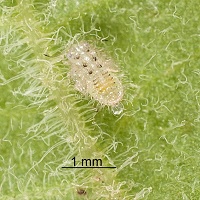 |
 |
|---|---|---|---|
| Stages: | Egg | Nymphs | Adult |
| Mark Of Identification: | Eggs are laid in a circle on the underside of leaves. | Short glass-like rods of wax along the sides of the body. | Powdery white, active during early morning hours. |
| Life Cycle: | 3-30 Days. | 9-19 Days. | 15-30 Days. |
Management (Pest Control):
| Chemical: | Spraying Triazophos 40 EC (1.5 ml/litre of water) or a mixture of 1.5 ml of Monocrotophos 36SL + 1.0 ml of Dichlorvos 76 EC per litre of water. The sprays are repeated at an interval of 8-10 days. |
|---|---|
| Organic: | Spray G Agro Beau 5gm/lit + G Agro Microfeed L 5ml/lit 2 to 3 spray at 21 days interval. |
| Images Of Pest Life Cycle: | 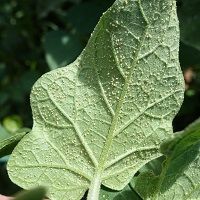 |
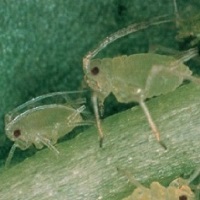 |
 |
|---|---|---|---|
| Stages: | Egg | Nymphs | Adult |
| Mark Of Identification: | Eggs hatch after one or two days. Young aphids, called nymphs. | Oval or slightly elongated, reddish brown with six segmented antennae. | Small yellowish green typically colonizing the upper sides of mature leaves of pomegranate. |
| Life Cycle: | 2-3 Days. | 14 Days. | 7-9 Days. |
Management (Pest Control):
| Chemical: | Release first instar larva of Chrysoperla zastrowi sillemi @ 15 / flowering branch (four times) at 10 days interval from flower initiation during April. |
|---|---|
| Organic: | Spray G Agro Microfeed L 5 ml/lit 2 to 3 spray at 21 days interval. |
Crop Selection
| Seed Variety | Characteristics | Crop Yield (Kg/Tree) |
|---|---|---|
| Ganesh | 1. It is a prolific bearer, fruit very large, rind yellowish red, pinkish aril with soft seeds. 2. It is the commercial cultivar of Maharashtra. 3. This has soft seeds and pinkish flesh with a juice of agreeable taste and bears heavily. |
8-10 |
| Bhagwa | 1. It is a prolific bearer, fruit very large, rind yellowish red, pinkish aril with soft seeds. 2. It is the commercial cultivar of Maharashtra. 3. This has soft seeds and pinkish flesh with a juice of agreeable taste and bears heavily. |
30-38 |
| Phule Arakta | 1. The fruits are bigger in size, sweet with soft seeds, bold red arils. 2. It also possesses glossy, attractive, dark red skin. 3. It is less susceptible to fruit spots and thrips. |
30-35 |
| Mridula | 1. This variety has all the characters of the Ganesh variety except the arils are dark red in colour. 2. The colour of the arils in ‘Ambe’ bahar and ‘Mrig’ bahar is dark red in colour while it is pink during the ‘Hasta’ bahar. 3. The average fruit weight is 250-300 grams. |
8-10 |
Documents

